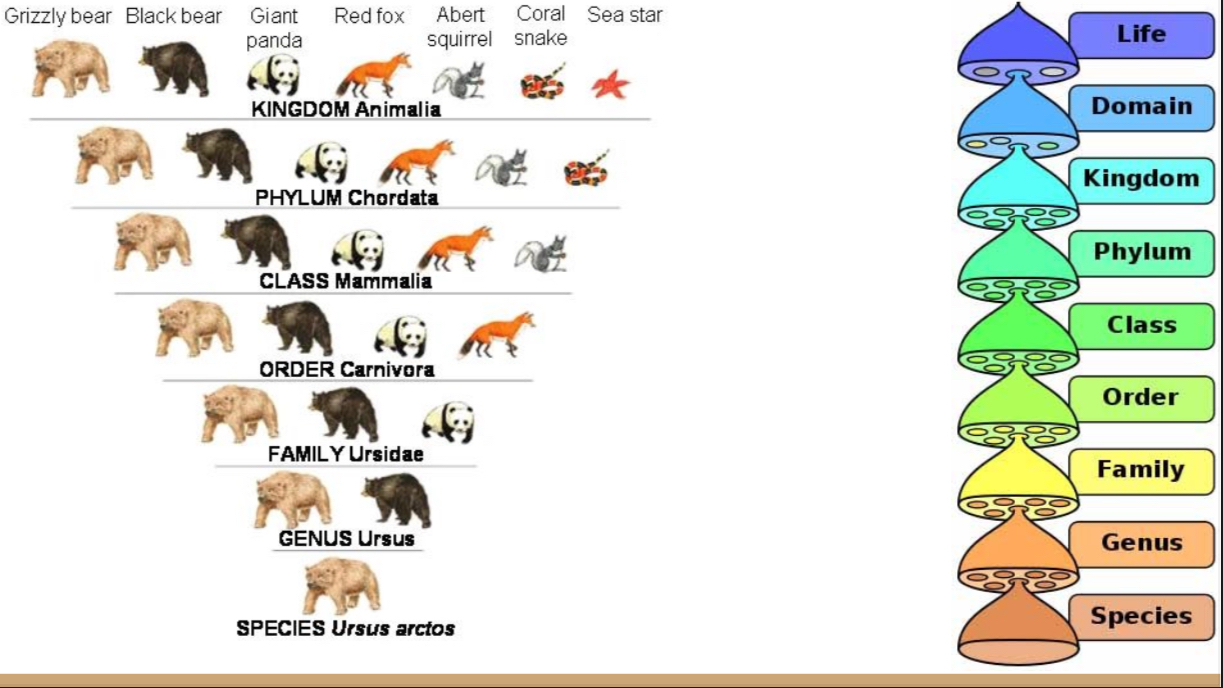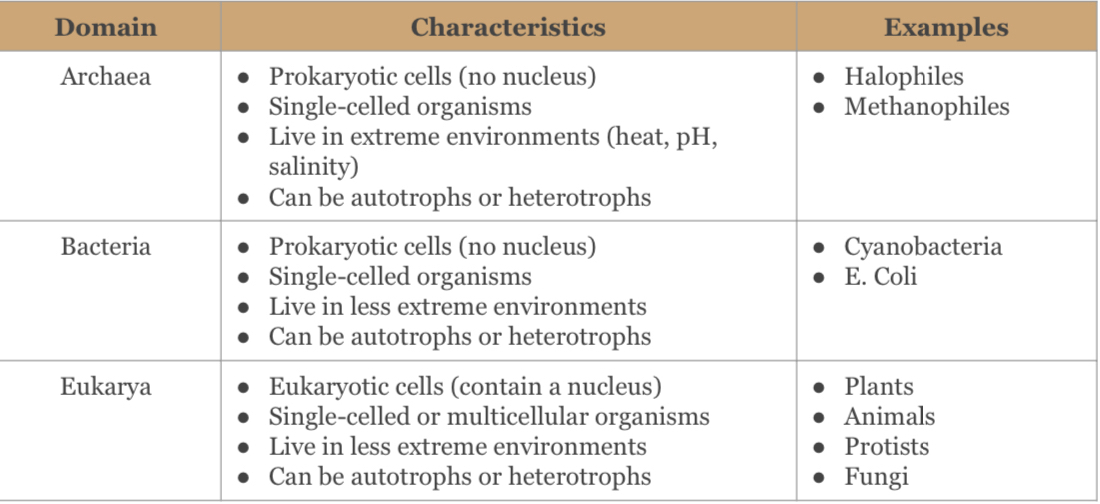Ecology and Taxonomy
Overview of Biotic and Abiotic Factors
Biotic Factors:
Defined as the living components of an ecosystem.
Examples include plants, animals, bacteria.
Abiotic Factors:
Defined as the nonliving components of an ecosystem.
Examples include sunlight, soil, rocks, and water.
Ecosystems and Their Components
Ecosystem Definition:
A community of living organisms interacting with each other and their abiotic environment.
Includes all living beings (e.g., animals, plants) and nonliving factors (e.g., temperature, water).
Levels of Organization:
Individual: A single organism.
Population: A group of individuals of the same species.
Community: Different populations of various species interacting.
Ecosystem: Community plus abiotic factors.
Biome: A larger geographical area defined by climate, vegetation, and animal communities.
Biosphere: The global ecological system integrating all ecosystems.
Roles Within Ecosystems
Niche:
Refers to the role or function of an organism within its ecosystem, including its interactions for resources, habitat, and position in food webs.
For example, a bunny's role may be as a prey, while a deer also serves as prey but at a different ecological level.
Competition in Communities
Interspecific Competition:
Competition between different species.
Intraspecific Competition:
Competition among individuals of the same species.
Niches are crucial in understanding competition, as overlapping niches can lead to competition for resources.
Limiting Factors
Biotic Limiting Factors:
Examples include competition, predation, and parasitism.
Abiotic Limiting Factors:
Examples include availability of water, temperature, and nutrient levels in soil.
Predator-Prey Relationships
The predator-prey cycle presents a balance where increases in prey lead to increases in predators, and vice versa. This creates oscillating population dynamics:
More prey leads to more predators.
Peak predator populations result in lowered prey populations, allowing the prey to recover.
Changes in this cycle can also be influenced by abiotic factors.
Human Impact on Ecosystems
Human Factors:
Activities such as deforestation, agriculture, and carbon emissions significantly affect populations and ecosystems.
Fracking: A controversial method of extracting fossil fuels that can cause environmental disturbances.
Taxonomy Overview
Taxonomy:
The scientific classification system of living organisms.
Organisms are classified into three domains:
Archaea: Single-celled organisms, often extremophiles.
Bacteria: Another group of single-celled organisms without a nucleus.
Eukarya: Multicellular or single-celled organisms that have a nucleus (includes animals, plants, fungi).
Levels of Taxonomic Classification:
From broadest to most specific: Domain, Kingdom, Phylum, Class, Order, Family, Genus, Species.
Example: Humans are classified as (\text{Homo sapiens}).
Binomial Nomenclature
Definition:
A system using two names to uniquely identify species: the first name is the genus and the second is the species.
Formula:
Genus name capitalized, species name in lowercase (e.g., (\text{Ursus arctos}) for brown bears).
This system ensures clarity and precision in naming organisms, standardizing biological classification across sciences.
Taxonomy
 Domain
Domain